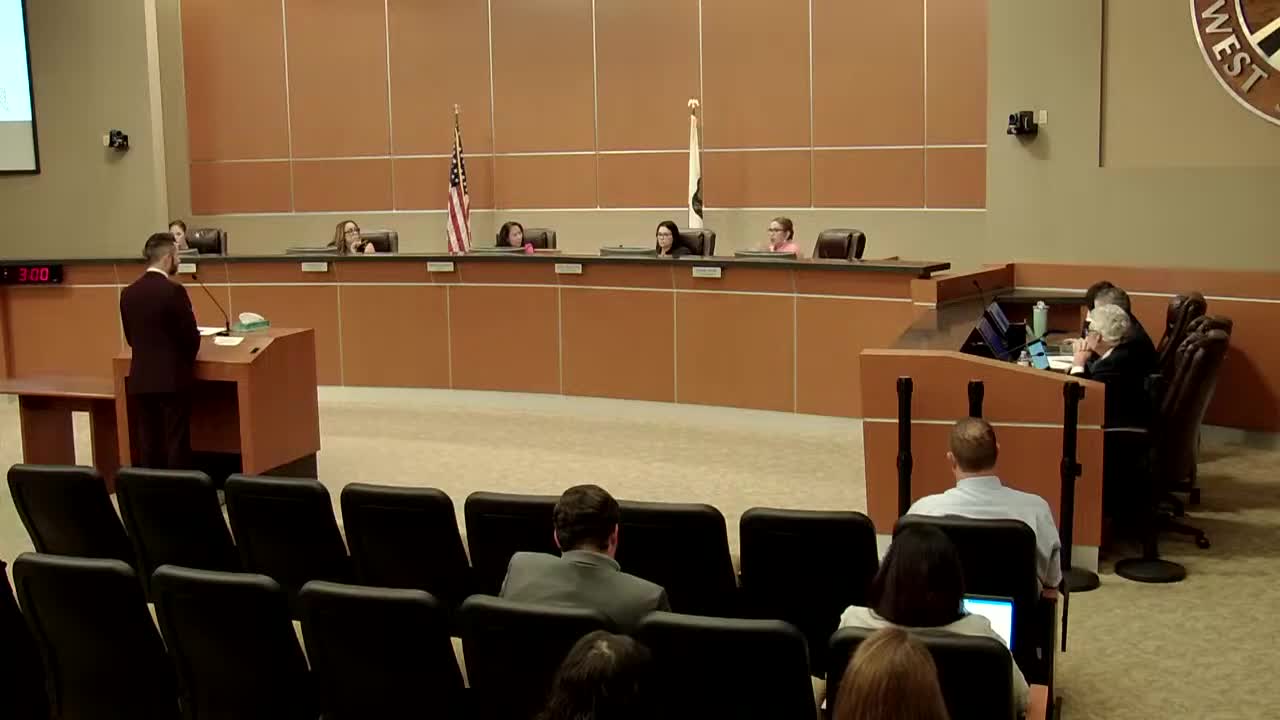West Sacramento Council Considers Changes to Carport Ordinance Amid Growing Complaints
October 02, 2025 | West Sacramento, Yolo County, California
This article was created by AI summarizing key points discussed. AI makes mistakes, so for full details and context, please refer to the video of the full meeting. Please report any errors so we can fix them. Report an error »

In the heart of West Sacramento's city hall, a lively discussion unfolded as council members grappled with the complexities of local ordinances. The focus of the meeting on October 1, 2025, centered around the growing number of nonconforming carports in residential neighborhoods, a topic that has sparked concern among residents and officials alike.
One council member expressed frustration over the current ordinance, highlighting the sheer number of structures—17 in just one neighborhood alone—that may not comply with city regulations. "Times are changing," they remarked, questioning the practicality of enforcing a policy that could overwhelm city staff with reports and inspections. The council member suggested that instead of pursuing individual complaints, it might be more effective to reconsider and potentially revise the existing ordinance to better reflect the realities of modern living.
The conversation took a deeper turn as council members pondered the implications of such a change. Would it ease the burden on city resources, or would it open the floodgates to further noncompliance? The council member urged their colleagues to consider a proactive approach, encouraging them to direct the city manager's office to explore possible amendments to the ordinance.
As the meeting progressed, the tension between maintaining community standards and adapting to evolving needs became palpable. Another council member chimed in, sharing their disagreement with the city attorney regarding the responsiveness of the city to past reports of nonconforming structures. They pointed out that delays in addressing these issues could leave residents feeling unheard and frustrated.
The discussions at this city council meeting reflect a broader challenge faced by many municipalities: balancing regulation with the realities of community life. As West Sacramento navigates these changes, the council's decisions will undoubtedly shape the landscape of the city and the experiences of its residents in the years to come. The outcome of these deliberations remains to be seen, but one thing is clear: the voices of the community are being heard, and their concerns are prompting critical conversations about the future of local governance.
One council member expressed frustration over the current ordinance, highlighting the sheer number of structures—17 in just one neighborhood alone—that may not comply with city regulations. "Times are changing," they remarked, questioning the practicality of enforcing a policy that could overwhelm city staff with reports and inspections. The council member suggested that instead of pursuing individual complaints, it might be more effective to reconsider and potentially revise the existing ordinance to better reflect the realities of modern living.
The conversation took a deeper turn as council members pondered the implications of such a change. Would it ease the burden on city resources, or would it open the floodgates to further noncompliance? The council member urged their colleagues to consider a proactive approach, encouraging them to direct the city manager's office to explore possible amendments to the ordinance.
As the meeting progressed, the tension between maintaining community standards and adapting to evolving needs became palpable. Another council member chimed in, sharing their disagreement with the city attorney regarding the responsiveness of the city to past reports of nonconforming structures. They pointed out that delays in addressing these issues could leave residents feeling unheard and frustrated.
The discussions at this city council meeting reflect a broader challenge faced by many municipalities: balancing regulation with the realities of community life. As West Sacramento navigates these changes, the council's decisions will undoubtedly shape the landscape of the city and the experiences of its residents in the years to come. The outcome of these deliberations remains to be seen, but one thing is clear: the voices of the community are being heard, and their concerns are prompting critical conversations about the future of local governance.
View full meeting
This article is based on a recent meeting—watch the full video and explore the complete transcript for deeper insights into the discussion.
View full meeting
